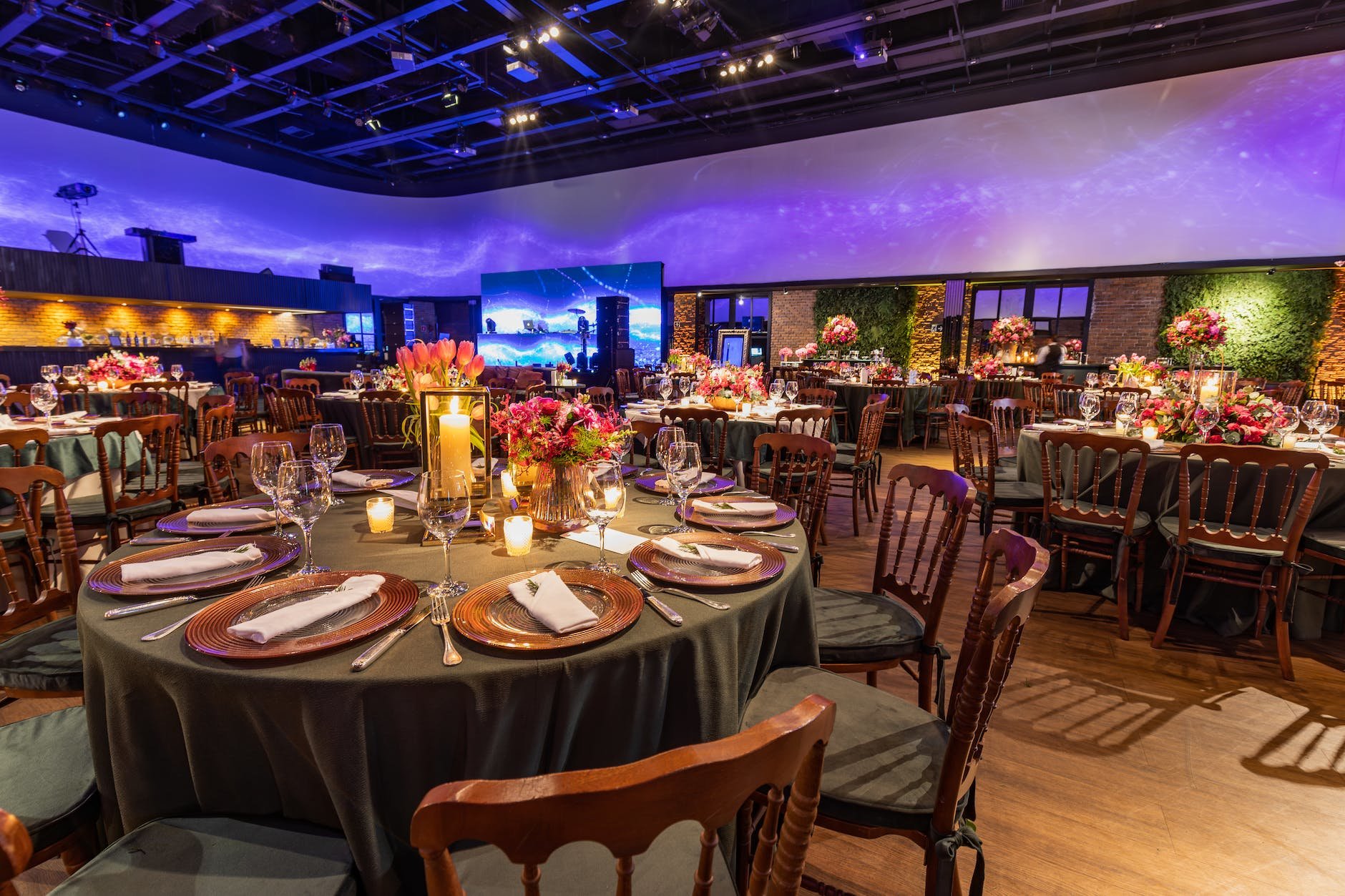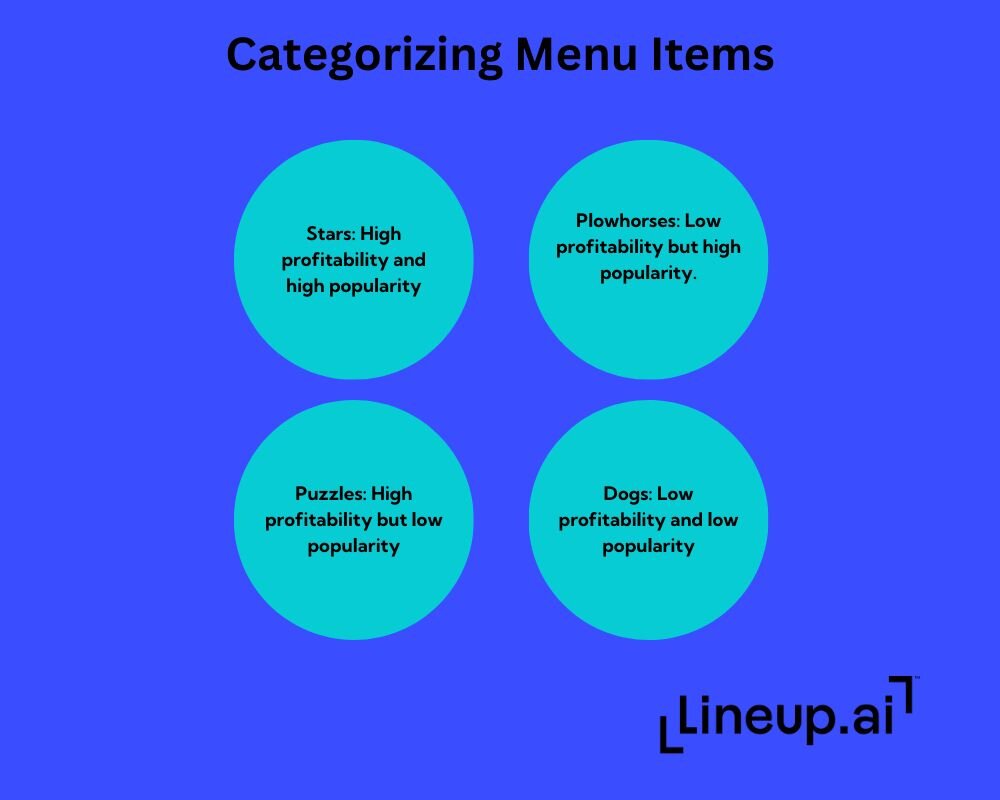As a restaurant owner or manager, you know that running a successful restaurant is about much more than just serving great food.
From developing a unique brand identity to leveraging technology, hiring and retaining your staff, and providing exceptional customer service, these factors are what makes a good restaurant successful.
Unfortunately, many restaurants fail within their first year, with a staggering 60% of new establishments closing their doors for within their first year, which means that the estimated success rate for restaurants is 40%, implying the challenging nature of achieving and maintaining success within the restaurant industry.
But what sets successful restaurants apart from those that struggle to survive?
In this blog post, we'll explore six key factors for restaurant success that can help you navigate the challenges of running a restaurant and build a thriving business.

1. A Strong Concept
Start with creating a strong concept, which will act as the foundation of your restaurant business.
Your concept guides everything about your branding and how your business should run. It should include:
- Menu design – How you design your menu will depend on your restaurant. Run a fine dining restaurant? You might have a simple menu design with an emphasis on ingredients.
- Service style – Whether you’re running a bar, bistro, buffet, or coffee shop, your concept should reflect that. This informs what you include in your menu, how you interact with customers, and other aspects of your business.
- Ambiance and decor – What sort of lighting are you going for? What about music? Decor? How do you want guests to feel when they visit your restaurant? Consider these questions for a cohesive theme that creates a unique, distinct experience for guests.
- Style of food – What types of food do you want to serve at your restaurant? For example, if you’re going for a “fresh food” vibe, you might serve modern vegan and vegetarian food, emphasizing whole, natural, and high-quality ingredients.
These elements are what make up an effective restaurant concept. To flesh them out further, think about what makes your restaurant unique. According to the National Restaurant Association’s State of the Restaurant Industry 2023 report, nearly half of the operators surveyed, or 47%, expect competition in the restaurant industry to be more intense this year compared to last.
Research your customers and location to understand the type of experience they’re looking for. Then, focus on selling that experience, and not just food.
2. Smart Menu Planning
If a strong restaurant concept is the foundation of your business, then the menu is the visual roadmap to what you have to offer. From flavorful entrées to creatively crafted cocktails, each dish and drink should reflect the character of your establishment.
The key to smart menu planning? Take a data-driven approach. By using sales data, you can determine the best pricing and which dishes to feature on your menu. This is called menu engineering.
With menu engineering, you can categorize menu items based on popularity, sales volume, and profitability. This allows you to scale down your menu to the most popular and profitable products, which is known as a minimum viable menu.
Menu engineering gives you a system for regularly analyzing your menu so that you can keep it optimized to boost your bottom line.
Another way to approach menu planning is to categorize items into the following categories:
- Stars – Highly popular menu items that are also very profitable
- Plow Horses – Highly popular menu items that aren’t very profitable
- Puzzles – Highly profitable menu items that aren’t very popular
- Dogs – Menu items that are neither popular nor profitable

This process works by calculating each item’s profitability and plotting menu items on an x/y axis by popularity and food cost percentages. Separate the charts into four quadrants: Plow horse, Dog, Puzzle, and Star.
The plow horses on your menu are popular with your customers but aren’t profitable. So, the key is to lower food costs, but not in a way that makes the dish less popular. Consider varying the size of the dish (think half-sized salad to full-sized salad) to increase value. You could also offer alternative versions of a dish that’s made with premium ingredients to boost profitability.
Dogs have higher food costs and aren’t loved by customers, so get rid of them. Since the profit potential is too low, it’s not worth it to tweak dogs into something better.
Puzzles have high-profit margins, but not many customers order them. Figure out what’s hurting the popularity of your puzzles. Are they presented poorly? Could you describe these dishes in a more enticing way?
Stars are, well, your “stars”. They’re already working well. But that doesn’t mean you can’t make these stars shine even brighter. You can start promoting them on social media to raise more awareness of these dishes. Or, highlight the item on your menu by putting them in a separate box so that they’re more visible to guests.
3. Consistency
Repeat customers expect the same experience every time. Achieving this type of consistency can do wonders for improving customer lifetime value, retaining your customer base, and boosting your restaurant’s bottom line.
Here are a few areas you should work on to provide a more consistent guest experience at your restaurant:
- Documentation – Document proper procedures and processes. This includes set shifts, the organizational chart job responsibilities, daily checklists, station components, portioning, and recipes. When consistent procedures are in place, customers can expect a consistent experience every time.
- Training – Provide your staff with proper training and give them the confidence to do their job well. That way, they can nail down how things should be done in your restaurant, which will cut down on mistakes and inconsistency.
- Customer response – Track customer satisfaction. Restaurant management should get to know repeat customers and the dishes they usually order. Track their reactions and alter dishes accordingly.
- Hiring practices – Hire staff members who are experienced and enjoy serving people. During onboarding, show them how they should interact with and greet customers, prepare dishes, and handle problems when they arise.
4. Satisfied Staff
Having engaged and motivated staff means better customer service. And better customer service means customers will leave satisfied, making them more likely to come back.
Follow these tips to retain essential restaurant staff members:
- Create an open-door atmosphere by allowing feedback without fear of reprisal – Employees should feel comfortable coming to management about any problems, feedback, or other important issues. This makes for a more positive company culture that fosters teamwork, commitment, and trust. Learn more about tips to improve internal communication in a restaurant.
- Reward restaurant employees for their hard work – When a new hire or tenured employee meets a goal you set, reward them for it. Host a team party, give out swag bags, offer a longevity bonus, or develop team-building opportunities.
- Pay fairly and offer competitive benefits – Employees will leave their current job for better pay. Offer competitive wages when employees show consistently great productivity. Look at what the competition is offering. Then, fine-tune your compensation package accordingly.
- Conduct stay interviews – Doing exit interviews after an employee leaves gives you a chance to look at the things you could have done better so you reduce restaurant staff turnover. But you can also ask employees why they stay. This not only shows that you care about their experience working at your restaurant, but it also helps you understand what elements of the job make them want to stay.
5. Great Marketing
Maybe you’re doing everything else right. But if customers don’t know about your restaurant, it won’t matter. So, always invest in your marketing plan.
Increase brand exposure with a responsive website. Your website should include an about page, a reviews page, a photo gallery, and a FAQ page.
Consider adding a blog that allows potential customers to get to know your brand. In your blog, update customers about new menu items, announce events, answer common questions, share stories about customer experiences, and highlight star employees.
Get active on social media to build your online presence. Connect with potential customers on a more personal level, encourage engagement, and humanize your brand.
You should also have someone manage the online reputation of your restaurant. Why? Because 82% of customers read online reviews before visiting a local business.
When people search for a restaurant in their area, and yours pops up, one of the first things they’re going to look at is your reviews. You want them to see mostly positive reviews, with any negative comments addressed by management.

6. The Right Tech Stack
Technology and restaurant management software can streamline restaurant operations, increase efficiency, and boost productivity.
Here are a few restaurant management solutions you can implement to drive better results for your restaurant:
- Reservation management software – When booking a table, guests want a seamless experience from beginning to end. Reservation management software, such as TableAgent and Tablein, can help. These cloud-based tools let customers make a booking whenever they like without having to call you. You can also remind guests of their upcoming visits, which can reduce the number of no-shows.
- Digital menus – Digital restaurant menu solutions like Menuflow and Menumodo help diners explore new items and try them. There are many ways to display a digital menu. This could be dynamic signage above the service counter or out at a drive-thru. You could make your menu available via a QR code.
- Sales and labor forecasting software – Solutions like Lineup.ai can help you create highly accurate sales forecasts that take into account historical sales data, weather and local event information, and more. Then, you can use these forecasts to create optimal restaurant shift schedules. You can also avoid overstaffing and understaffing by using Lineup's labor forecasting feature to accurately predict how much labor is needed in your restaurant(s) before building schedules.
- Inventory management software – Inventory management is a key part of managing restaurant profitability. Using Excel spreadsheets to manage inventory is tedious and isn’t much better than plain old paper. Inventory management software like Orca Inventory and MarketMan can automate this process, helping you keep track of stock and food waste while integrating with your POS system.
Make Your Restaurant a Success In 2024
There are many moving parts to a successful restaurant business. And they go beyond offering delicious cuisine. Just as a chef must consider the texture, flavor, and presentation of a dish, restaurateurs must carefully manage all aspects of their business, from menu design to consistency across the brand.
Carefully implement these key elements of a successful restaurant, so you can serve up an unforgettable dining experience that will keep your customers coming back for more.
Further read:

Boris Mustapic is a content marketer with a decade of experience in the digital marketing industry. He specializes in helping B2B SaaS companies drive growth through strategic, product-led content marketing.
More about the author